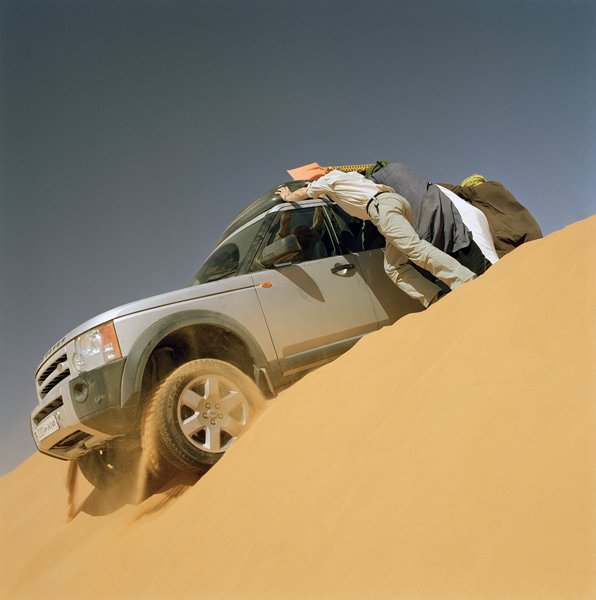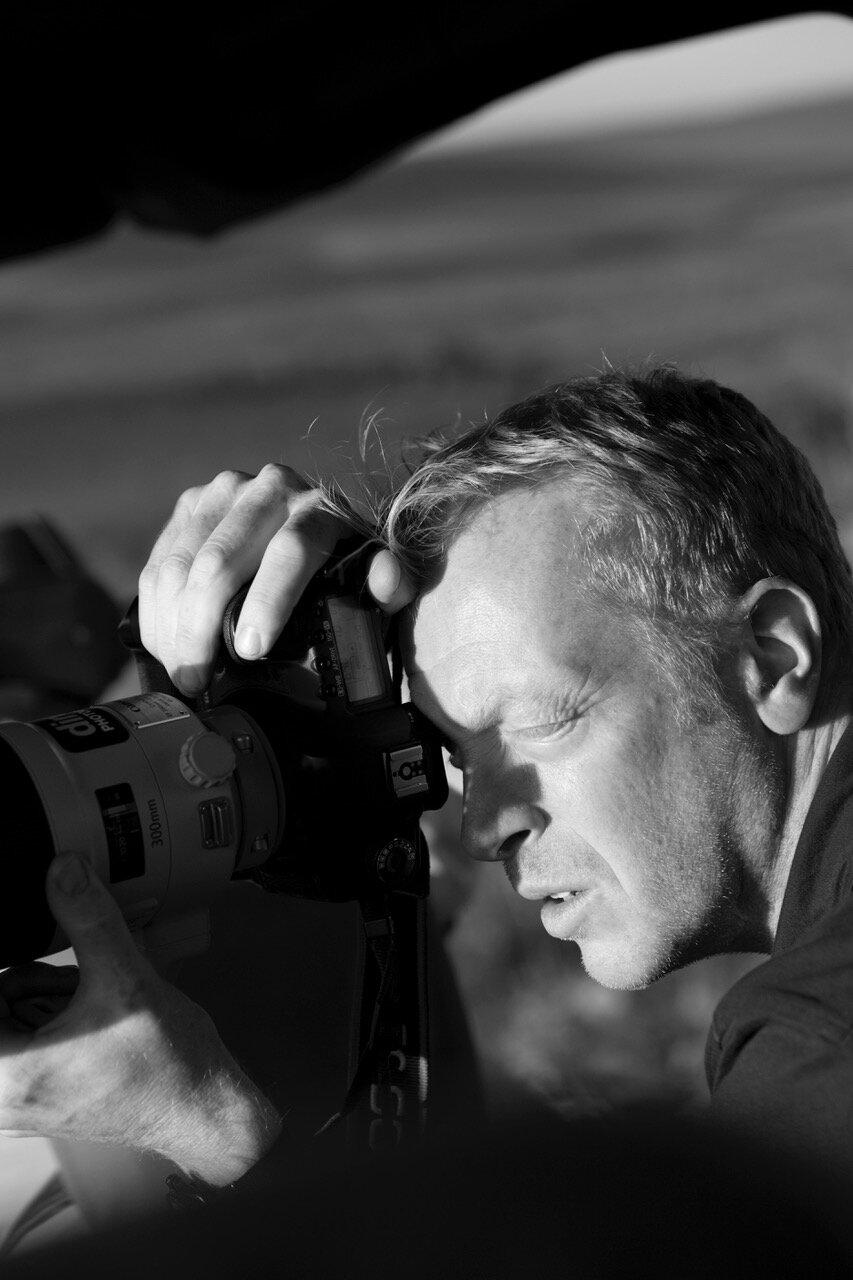Philip Lee Harvey, Photographer
Philip Lee Harvey drove hundreds of miles into the Sahara desert for one photograph.
“Some of it is what you’re going there for, but a lot of it is the journey itself. ”
“March 29, 2006 was a total eclipse. And the best chance of getting a photograph would be where the totality lasted the longest. And that just happened to be Waw an Namus, an extinct volcano in the Libyan desert where the eclipse would last four minutes and 11 seconds. And if we missed it, then we wouldn’t get another chance at the same spot for another 410 years!
I flew to Tripoli and met a team from Land Rover who had already driven from the UK, and we headed out in a Discovery. The first day was just getting out of Tripoli and then we were in the desert for three and half days.
We had a Tuareg guide called Barka in an old Toyota Land Cruiser and we had to follow his wheel tracks exactly over the dunes to avoid getting stuck in the soft sand. We spent the first day in constant fear that the car would roll over, but then we got used to the motion. But we still got stuck on a regular basis. Sometimes it would be just carelessness that you wouldn't see the soft sand. A lot of the time we just we weren't going fast enough. If you hesitated for one moment to check your line you’d get stuck. The other way you get stuck a lot is when you're coming to the crest of a dune with a 45 degree drop the other side. You've got a gauge how fast to go to get the vehicle over it without taking off. I’ve never done so much digging in my life.
We also got through quite a few tyres, there are these things called sand flowers but they're like solid sharp bits of rock which can just shred your tyres.
Although we did have GPS, Barka didn’t need it. He just knew where to go. We were completely reliant on his knowledge of the desert. Each night we’d camp, just us alone in the middle of nowhere.
We didn’t see another human being for days, but when we got closer to the shoot location we saw a few people that had the same idea and I felt quite disappointed, we’d got so used to being by ourselves.
The idea was to photograph the car and the eclipse together and there were a lot of technical challenges. We had to calculate where the sun would be at the time of the Eclipse and as I was shooting on a 30mm fisheye lens on a Hasselblad film camera we had to dig a big hole for me to get the angle I needed.
That moment of the total eclipse was almost primeval, it made the hairs stand up on your arms. Everything goes very cold for those few minutes and it’s just very surreal. You can imagine what it felt like for people thousands of years ago who had no idea of what this thing was. You feel very much in tune with your surroundings at that time.
We had one more night in the desert and then drove back through the sand. It’s funny, I remember getting there, but I don’t remember the return journey.
If we’d gone there by helicopter instead it wouldn’t have been the same. You feel connected to the environment because you've done it the hard way. And I also really like the nonsense of it. It’s the idea of why do you climb a mountain? Because it's there.
And when I look back, of course I think about the eclipse, but I also think about the camaraderie. Some of it is what you’re going there for, but a lot of it is the journey itself. That’s why you do it.”
Photography Philip Lee Harvey Instagram















